
Risk Hazards & Crisis in Public Policy
Scope & Guideline
Exploring the intersection of risk and policy innovation.
Introduction
Aims and Scopes
- Risk Management Strategies:
Explores various strategies and frameworks for managing risks associated with natural disasters, health emergencies, and technological hazards, providing insights into best practices and policy implications. - Crisis Communication and Public Perception:
Investigates the dynamics of crisis communication, including the role of media, public perception, and trust in authorities during crises, with a goal of improving communication strategies. - Social Vulnerability and Resilience:
Focuses on understanding the social dimensions of vulnerability and resilience in the face of disasters, examining how social equity impacts crisis outcomes and policy effectiveness. - Governance and Policy Analysis:
Analyzes the governance structures and policy responses to crises, including the role of local, national, and international actors in disaster management and risk regulation. - Innovations in Emergency Management:
Highlights innovative practices and technologies in emergency management, including the use of social media and crowdsourcing for crisis response and community engagement.
Trending and Emerging
- Impact of COVID-19 on Crisis Management:
A significant number of recent publications focus on the lessons learned from the COVID-19 pandemic, examining its impact on crisis management strategies and public health policies, which is critical for future preparedness. - Role of Social Media and Crowdsourcing:
Emerging research increasingly emphasizes the role of social media and crowdsourcing in disaster response, exploring how these tools can enhance community engagement and information dissemination during crises. - Equity and Social Justice in Disaster Response:
There is a growing focus on social equity and justice in disaster management, reflecting an awareness of how marginalization affects vulnerability and resilience, which is essential for developing inclusive policies. - Interdisciplinary Approaches to Risk Management:
The journal is trending towards interdisciplinary research that integrates insights from various fields, such as sociology, psychology, and environmental science, to better understand and address complex crises. - Misinformation and Public Trust:
Recent publications are increasingly addressing the challenges posed by misinformation during crises and its effects on public trust, highlighting the importance of effective communication strategies in managing perceptions.
Declining or Waning
- Historical Perspectives on Crisis Management:
Research focusing on historical analyses of past crises and their management has decreased, possibly due to a shift towards more contemporary and immediate concerns in crisis response. - Technical and Engineering Approaches to Disaster Management:
There has been a noticeable reduction in publications emphasizing purely technical or engineering solutions to disaster management, suggesting a move towards more integrative and interdisciplinary approaches. - Quantitative Risk Assessment Models:
The frequency of studies employing traditional quantitative risk assessment models has diminished, indicating a potential shift towards qualitative analyses and case studies that explore complex social dynamics.
Similar Journals
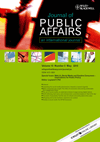
Journal of Public Affairs
Empowering Discourse on Global AffairsThe Journal of Public Affairs, published by WILEY, is a prestigious academic forum dedicated to the study of public administration, political science, and international relations. With its ISSN 1472-3891 and E-ISSN 1479-1854, this journal has established itself as a crucial resource in the field, reflected in its impressive Scopus rankings, placing it in the top 4% of journals in Political Science and the top 12% in Public Administration. As part of its commitment to fostering innovative research, the journal has maintained a commitment to inclusivity in scholarship from its inception in 2008 and continues to be a significant platform for discourse up to 2024. With an impact factor that underscores its relevance and authority, the Journal of Public Affairs targets an audience of researchers, policymakers, and students eager to explore critical issues shaping governance and public policy. This journal serves as a vital repository of knowledge, aiming to not only disseminate scholarly work but also to bridge theoretical insights with practical applications in the public sector.

INTERNATIONAL REVIEW OF ADMINISTRATIVE SCIENCES
Delivering high-quality research for a better tomorrow.INTERNATIONAL REVIEW OF ADMINISTRATIVE SCIENCES, published by SAGE PUBLICATIONS LTD, is a premier academic journal dedicated to advancing the field of public administration, sociology, and political science. With an impressive Impact Factor reflecting its importance, the journal is ranked in the Q1 category for both public administration and sociology/political science, showcasing its rigorous peer-review process and high-quality research publications. Established in 1957, it continues to provide valuable insights and innovative scholarship, paving the way for future research and practical applications in governance and administration. The journal's editorial aim is to foster scholarly dialogue among researchers, practitioners, and policymakers, contributing to the understanding of efficient and effective public service management. While it is not an open-access journal, the INTERNATIONAL REVIEW OF ADMINISTRATIVE SCIENCES remains an essential resource for academics and professionals seeking to deepen their knowledge and engage with contemporary issues in administrative science.
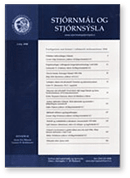
Icelandic Review of Politics & Administration
Exploring the forefront of Icelandic political thought.The Icelandic Review of Politics & Administration is a distinguished open-access journal dedicated to advancing the field of political science and public administration. Published by the esteemed Institute of Public Administration and Politics since 2005, this journal serves as a vital platform for scholars and practitioners to disseminate research that informs policy-making and governance practices in Iceland and beyond. With an ISSN of 1670-6803 and an E-ISSN of 1670-679X, it fosters accessibility to high-quality academic work that explores contemporary political challenges and administrative strategies. The journal is headquartered at the University of Iceland in Reykjavik, a hub of intellectual activity in the region. By embracing a commitment to open access, it ensures that groundbreaking ideas and insights reach a diverse audience, empowering researchers, professionals, and students engaged in understanding and improving the dynamics of politics and administration. With a focus on empirical research and theoretical advancements, the Icelandic Review of Politics & Administration is essential for anyone looking to engage deeply with the evolving landscape of governance.

Australian Journal of Emergency Management
Fostering collaboration for a safer tomorrow.The Australian Journal of Emergency Management, published by the Australian Emergency Management Institute, is a pivotal resource in the field of emergency management, public health, and safety research. With a history dating back to 1998 and a convergence period extending to 2024, this journal actively contributes to advancing knowledge and practice in emergency medical services and related areas. Holding strong positions in both the Q2 and Q3 quartiles of 2023 rankings, it stands out within its categories, particularly in Health Professions and Safety Research. While it is not an open-access journal, it provides essential insights and empirical research that are invaluable for researchers, professionals, and students alike. Located in East Melbourne, Australia, the journal ensures that critical advancements in emergency management and health are highly accessible to its global audience, fulfilling its mission to promote informed decision-making and improve community resilience during crises.
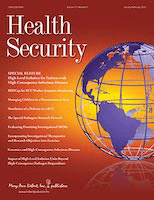
Health Security
Transforming health policy through critical insights and analysis.Health Security is a premier academic journal published by MARY ANN LIEBERT, INC, specializing in critical areas of public health, emergency medicine, and health policy. Since its inception in 2015, the journal has established itself as a vital resource for researchers, policymakers, and health professionals alike, boasting exceptional impact factors across multiple relevant categories, including Q1 in Emergency Medicine and Q1 in Safety Research. This esteemed publication not only contributes to the academic discourse surrounding health and safety but also offers open access options to maximize the dissemination of knowledge and innovative research. Health Security is dedicated to exploring the intersection of health, security, and safety, providing readers with timely and robust analysis that is particularly pertinent in today’s complex and evolving global health landscape. For those engaged in grassroots policy development or frontline emergency response, the journal stands as an indispensable tool for fostering understanding and facilitating informed action in an ever-changing environment.
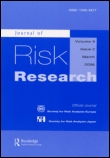
JOURNAL OF RISK RESEARCH
Elevating Understanding of Risk Through Quality ResearchJOURNAL OF RISK RESEARCH, published by Routledge Journals, Taylor & Francis Ltd, is a prestigious academic journal dedicated to advancing the understanding of risk across diverse fields, including engineering, safety, social sciences, and management. With its impact reflected in its Q1 quartile rankings in multiple categories and a solid standing in Scopus rankings, this journal serves as an essential resource for researchers, professionals, and students aiming to explore the complexities of risk analysis and its implications in real-world scenarios. The journal has been consistently publishing high-quality research since 1998, contributing to both theoretical frameworks and practical applications. While not open access, the content of the journal is invaluable for those keen on staying at the forefront of risk research. By addressing the multifaceted nature of risk, including safety, reliability, and strategic management, the JOURNAL OF RISK RESEARCH plays a vital role in shaping contemporary discussions and innovations in risk management and decision-making.
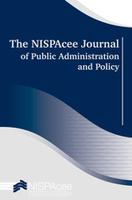
NISPAcee Journal of Public Administration and Policy
Transforming Ideas into Action for Public AdministrationNISPAcee Journal of Public Administration and Policy, published by SCIENDO, stands as a pivotal open-access platform in the field of public administration, facilitating the dissemination of innovative research and policy analysis since its establishment in 2009. With an ISSN of 1337-9038 and E-ISSN 1338-4309, the journal is based in Germany and is committed to contributing to the academic discourse surrounding public governance and administrative processes across Central and Eastern Europe. The journal’s notable ranking in the 2023 Scopus Quartile Q3 and its position in the 52nd percentile underscore its relevance and growing influence within the academic community. Researchers and scholars will find the journal an invaluable resource for advancing their understanding of public administration theories and practices, thus enhancing their professional contributions to the field. The NISPAcee Journal not only encourages knowledge sharing but also empowers both students and seasoned professionals to engage critically with contemporary issues in public policy and administration.

Geoenvironmental Disasters
Exploring the intersection of environment and engineering.Geoenvironmental Disasters, published by SPRINGERNATURE, is a leading open-access journal dedicated to advancing the interdisciplinary fields of environmental science, geography, and geotechnical engineering. Since its inception in 2014, the journal has made significant strides in disseminating high-quality research that addresses the challenges posed by geoenvironmental hazards and their impacts on society. With an impressive Q1 ranking across multiple categories, including Environmental Science (miscellaneous) and Geography, Planning and Development, it occupies a vital niche within the academic community. The journal’s rigorous peer-review process ensures that only the most insightful contributions are made available to a global audience. Researchers, professionals, and students are encouraged to engage with the content, which covers a wide range of topics, including disaster management, risk assessment, and stakeholder engagement in policy-making. This commitment to open-access accessibility since 2014 further enhances its reach and impact, providing a critical platform for advancing knowledge and innovation in managing geoenvironmental disasters.
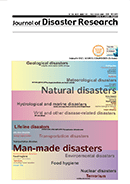
Journal of Disaster Research
Innovating strategies to mitigate disaster impacts worldwide.Journal of Disaster Research, published by FUJI TECHNOLOGY PRESS LTD, is a prominent Open Access journal that has been disseminating critical research on disaster management since its inception in 2007. Focusing on the interrelated fields of engineering and safety, the journal aims to advance knowledge and policy in disaster risk reduction, response, and resilience, making it an essential resource for researchers, practitioners, and policymakers alike. With an ISSN of 1881-2473 and E-ISSN 1883-8030, the journal covers a wide range of topics related to disaster studies, ensuring the dissemination of innovative solutions and diverse perspectives. Situated in Japan, the journal has been ranked Q3 in both Engineering (Miscellaneous) and Safety, Risk, Reliability, and Quality categories, showcasing its commitment to quality scholarship. As it converges its research contributions from 2006 to 2024, the Journal of Disaster Research continues to serve as a vital platform for advancing the science and practice of disaster research, thereby enhancing societal resilience against crises.
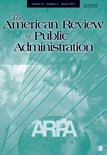
AMERICAN REVIEW OF PUBLIC ADMINISTRATION
Fostering Insights for Effective Governance.American Review of Public Administration, published by SAGE Publications Inc, stands as a premier journal dedicated to advancements in the fields of public administration, sociology, and political science. Since its inception in 1967, the journal has played a pivotal role in the discourse of public administration, reflecting a rich convergence of research and practice. Recognized in the Q1 category across Marketing, Public Administration, and Sociology and Political Science for 2023, it ranks impressively high in Scopus metrics—#4 in Public Administration and #20 in Sociology and Political Science. This esteemed journal provides a platform for academics, practitioners, and students to explore innovative theories, policies, and methodologies, while disseminating critical insights that promote effective governance and management. Although it operates under a subscription model, the journal's commitment to maintaining high scholarly standards makes it an indispensable resource for anyone looking to contribute to or advance their knowledge in the social sciences.